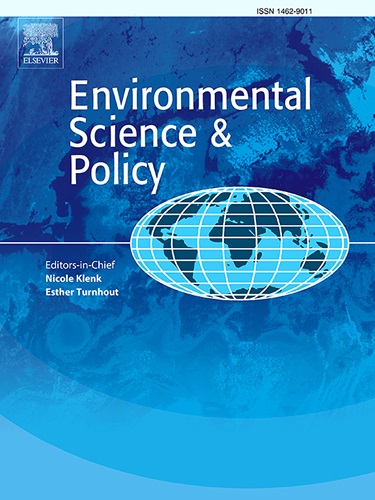改善土著社区适应气候变化的健康的概念框架
IF 5.2
2区 环境科学与生态学
Q1 ENVIRONMENTAL SCIENCES
引用次数: 0
摘要
气候变化正在影响土著社区的福祉,特别是健康。世界卫生组织采用了适应气候变化的卫生系统方法,以尽量减少与气候有关的健康风险。与非土著做法相比,土著社区对土著保健做法的认识有限,因此这种做法对土著社区的服务很差。通过进行全球系统文献综述,我们的目标是确定改善土著社区气候适应型卫生系统方法的机会。我们分析了2013年至2023年间发表的137篇同行评议的期刊文章。该研究旨在实现三个目标:1)确定土著社区的健康驱动因素;2)制定基于健康驱动因素的概念框架,以改进土著社区的气候适应型卫生系统方法;3)将拟议的框架应用于案例研究。我们应用潜在和显式内容分析来检查数据,从我们通过系统文献综述收集的引语中捕获明确的含义和潜在的主题。首先,我们确定了土著社区的15个健康驱动因素,将其分为三类:i)风险(n = 6),ii)保护(n = 3)和iii)重叠(n = 6)。其次,我们开发了一个包含两个主要组成部分的概念框架:(i)以地方为中心的反馈回路和(ii)健康驱动因素的塑造。以地点为中心的反馈回路由五个要素组成:(i)地点,(ii)原因,(iii)弱点,(iv)干预措施和(v)维持。健康驱动因素的塑造包括三个方面:(i)塑造类型,(ii)塑造机会,以及(iii)利益相关者。第三,案例研究评估肯定了概念框架在不同地理位置的适用性。本文章由计算机程序翻译,如有差异,请以英文原文为准。
A conceptual framework to improve climate-resilient health among Indigenous communities
Climate change is affecting Indigenous communities’ well-being, especially health. The World Health Organization has introduced a climate-resilient health system approach to minimize climate-associated health risks. Indigenous communities are poorly served by this approach, given its limited recognition of Indigenous health practices compared to non-Indigenous practices. By conducting a global systematic literature review, we aim to identify opportunities to improve climate-resilient health system approaches among Indigenous communities. We analysed 137 peer-reviewed journal articles published between 2013 and 2023. The study is aimed at three objectives: i) to identify health drivers of Indigenous communities, ii) to develop a health drivers-based conceptual framework to improve climate-resilient health system approach among Indigenous communities, and iii) to apply the proposed framework in case studies. We applied latent and manifest content analyses to examine the data, capturing explicit meanings and underlying themes from the quotes we collected through the systematic literature review. First, we identified fifteen health drivers for Indigenous communities, which were categorized into three categories: i) risk (n = 6), ii) protective (n = 3), and iii) overlapping (n = 6). Second, we developed a conceptual framework with two main components: (i) a place-centered feedback loop and (ii) the shaping of health drivers. The place-centered feedback loop consists of five elements: (i) place, (ii) causations, (iii) infirmities, (iv) interventions, and (v) sustaining. The shaping of health drivers includes three aspects: (i) shaping types, (ii) shaping opportunities, and (iii) stakeholders. Third, the case study assessment affirmed the applicability of the conceptual framework in different geographic locations.
求助全文
通过发布文献求助,成功后即可免费获取论文全文。
去求助
来源期刊

Environmental Science & Policy
环境科学-环境科学
CiteScore
10.90
自引率
8.30%
发文量
332
审稿时长
68 days
期刊介绍:
Environmental Science & Policy promotes communication among government, business and industry, academia, and non-governmental organisations who are instrumental in the solution of environmental problems. It also seeks to advance interdisciplinary research of policy relevance on environmental issues such as climate change, biodiversity, environmental pollution and wastes, renewable and non-renewable natural resources, sustainability, and the interactions among these issues. The journal emphasises the linkages between these environmental issues and social and economic issues such as production, transport, consumption, growth, demographic changes, well-being, and health. However, the subject coverage will not be restricted to these issues and the introduction of new dimensions will be encouraged.
 求助内容:
求助内容: 应助结果提醒方式:
应助结果提醒方式:


